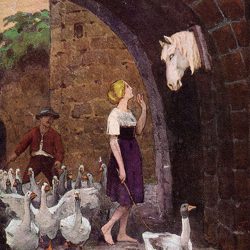Thumbling as pictured by Paula Ebner
Thumbling is a fairy tale number 37 in the classification of Children’s and Household Tales. It’s a story about an extremely little boy, an only child of older peasants, who is using a few tricks to earn some money for the family but things don’t always pan out as he expected.
A pair is wishing for a baby for a very long time. Even if it would be a very small baby. They finally got one. It’s a boy. He is so small they call him a Thumbling.
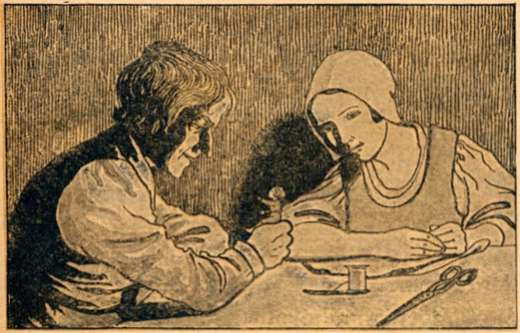
Thumbling is healthy and smart and it’s always fun to be around him. One day he and his father went out with a horse with Thumbling sitting in the horse’s ear and giving directions to the animal.
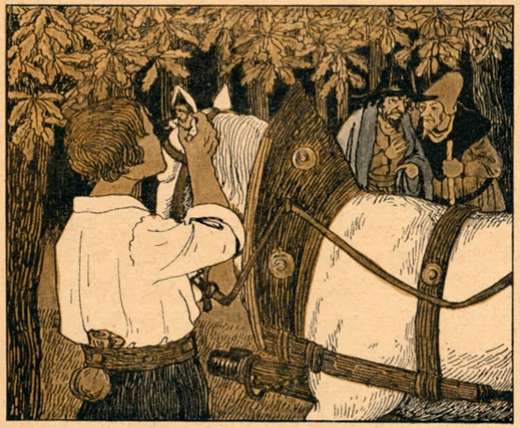
Two men see the horse, hear the voice, and want to find out what’s going on. They are charmed with Thumbling and offer money to his dad if he is willing to let the boy go with them. Thumbling tells his father to accept the offer because he’ll escape soon and return home while they will keep the money.

So the men take Thumbling and proceed. Soon he tricks them to let him down from one’s hat and escapes to the mouse’s hole. He is safe yet he must find a place to sleep.
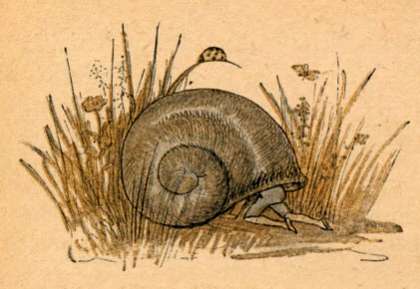
An empty snail’s house seems just right for him. But two robbers passed by and Thumbling overhears their plan. They are going to rob the pastor’s house. Thumbling gets their attention and proposes to join the robbers. He is small and can easily enter the house. They just have to wait outside and wat for the precious stuff he’ll bring. Robbers are all in but Thumbling has other plans. He is so loud he wakes a maiden in the house and robbers leave empty-handed.
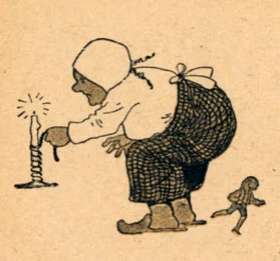
Maiden doesn’t notice Thumbling who finds a very comfortable place hor sleeping in the hay. Unfortunately, he stays unnoticed even when the maiden gives some hay to the cow. The cow eats the Thumbling who starts yelling from her belly.
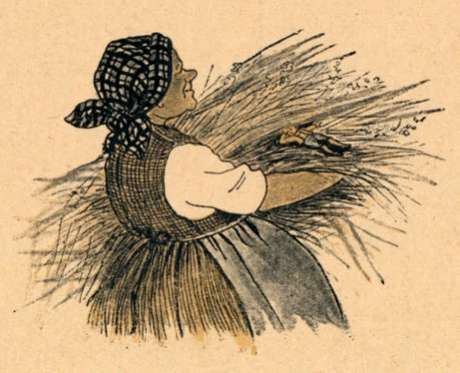
Maiden is frightened and the pastor believes an evil spirit attacked his cow. He orders the cow to be killed and her body thrown out.
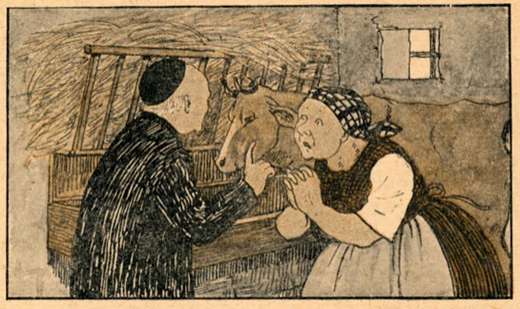
Before Thumbling manages to leave the cow, he is eaten by a wolf. But he uses his power of persuasion again tricking the wolf to go to his parents’ house where a lot of food could be found.
Wolf is killed by the peasants and Thumbling is saved by his parents. He decides to stop living so dangerously enjoying time with his dad and mom.
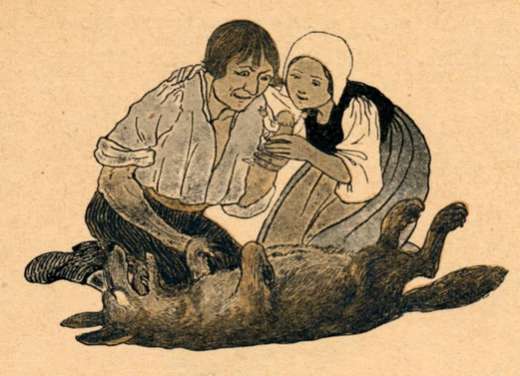
The pictures for this fairy tale were drawn by Paula Ebner (1873-1949), a painter and illustrator from Austria. Pictures of children, especially girls were her specialty and there are tons of beautiful postcards she made for several publishing houses.

As you probably noticed, Paula Ebner didn’t show some of the more gore scenes from the story (being eaten, for instance). These illustrations were published in 1946 when the audience was already a bit more concerned about the impact of darker images on children’s minds. It’s interesting to compare these illustrations with pictures from Franz Stassner’s Thumbling who illustrated the same story exactly 25 years before. You can see at the first sight different approaches of both artists at choosing the colors, scenes, and compositions.
Thumbling is sometimes titled as Tom Thumb but it should not be confused by Tom Thumb from England, who goes through several similar adventures but ends as a knight at the court of King Arthur.
There is also a Hop o’ My Thumb, a French fairy tale about a very little smart boy which is actually a combination of Hansel and Gretel and Jack and the Beanstalk.
A very similar fairy tale was written by Hans Christian Andersen who put a little girl Thumbelina in the center of his version. Andersen’s Thumbelina is longer, with a much better dramatic structure and very original ending. Like many of his stories, it has numerous autobiographic elements.
Brothers Grimm has another story with Thumbling: Thumbling as Journeyman (KHM 45) in their collection.
There are several well-known fairy tale themes in this story used in other fairy tales:
- The theme of yearning for a child, for instance, is present at the beginning of Briar Rose and Snow White.
- The theme of being eaten by a much larger animal is best known from Pinocchio. Don’t forget Red Cap or Wolf and Seven Kids, where wolf also eats his pray and is killed right after that.
- The theme of tricking the trickster is also present in Hansel and Grethel.
Wolf is a pretty popular animal in Grimms’ fairy tales. He is mostly used as a presentation of danger but can become a helper (think about Golden Bird) too. In Thumbling, a wolf serves as both.

